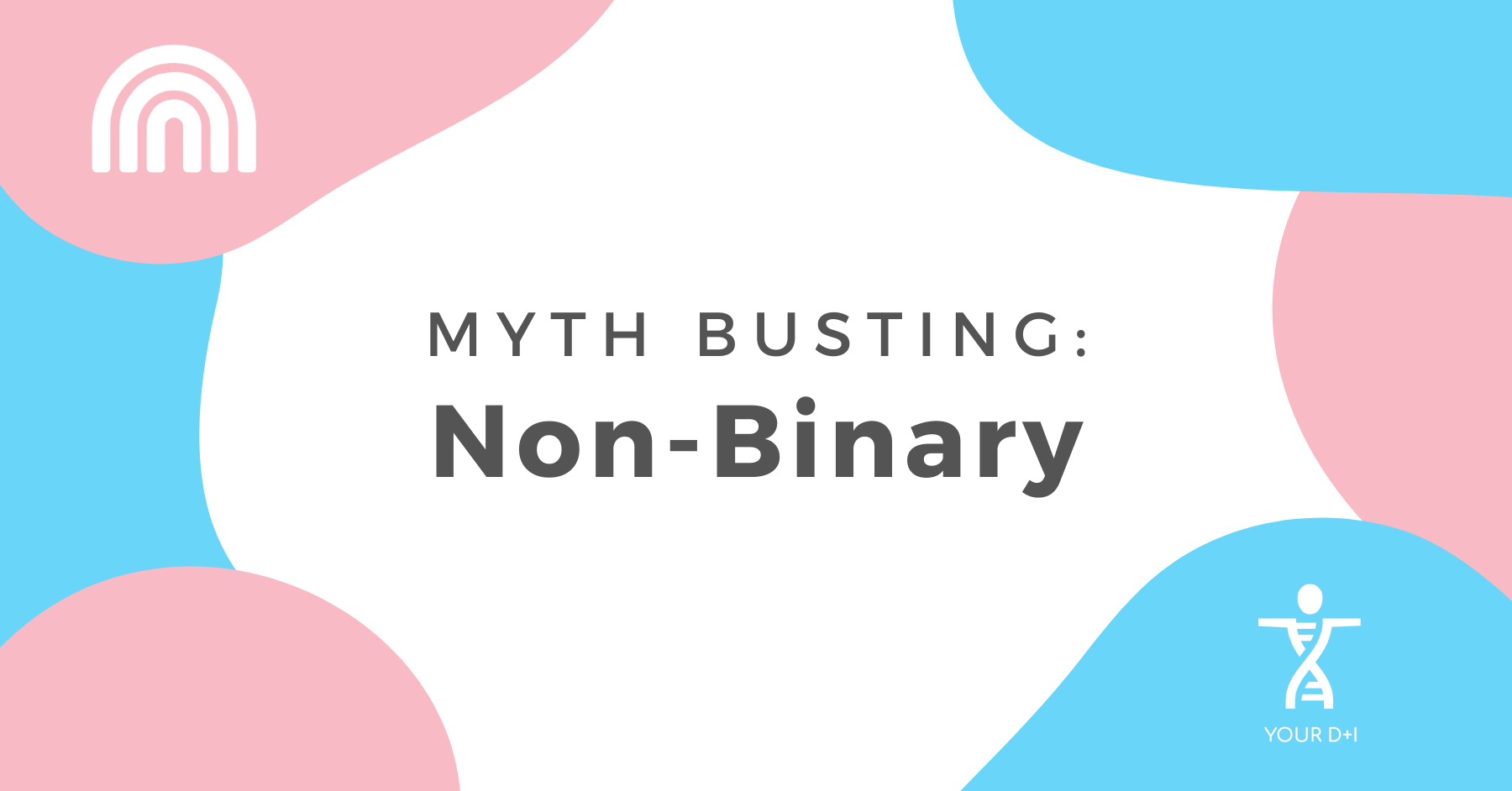Myth Busting: Non-Binary
Today’s blog is a particularly exciting one for three reasons. Not only is it the newest instalment of the Myth Busting: LGBT+ blog series, but it is also a part of our Trans Week blog series! This is a brand-new Your D+I blog series that celebrates Transgender Awareness Week as well as Trans in the City. Our goal with this series is to support you in making your company even more inclusive of trans individuals, including those with non-binary genders.
So why is understanding non-binary genders important for businesses? Well, we’ve already talked about the business benefits of Diversity + Inclusion as a whole in The Business Case For Equality, Diversity and Inclusion. But, to get all of those benefits, you and your employees need to be able to support those of all identities. And this includes non-binary people.
However, non-binary genders are confusing topic for many, and there are many myths out there that could be making it even more puzzling. This post will help replace those myths and misunderstandings with knowledge that can help your business be more inclusive!
What are non-binary genders?
As usual, let’s start off with a definition of today’s topic. Non-binary can be described as having a gender that doesn’t fit neatly into the boxes of ‘male’ or ‘female’ (or not having one at all). These gender identities fall under the umbrella of ‘transgender’. This is because non-binary people also identify as a different gender to the one they were assigned at birth.

Some non-binary people do not identify as trans, so non-binary and transgender can be seen as a Venn diagram of sorts. However, many non-binary folks do identify as trans and experience many of the same things as trans men and women. For example, many non-binary people transition both socially and physically. They can also experience gender dysphoria.
Now that we all know what non-binary means, let’s get on to busting some myths!
‘Non-binary genders aren’t real’
By far the biggest myth surrounding non-binary genders is that they are made-up. This fallacy also takes the form of ‘there are only two genders’ and ‘non-binary is just a fad’.
Some people are hesitant when they hear of non-binary because it’s new to them. Newness is also an argument that many use against the reality of non-binary genders. However, non-binary people have existed in many societies for thousands of years. Many cultures even have words for them, such as the Indigenous Northern American term ‘Two-Spirit’.
Some don’t believe in non-binary genders because they believe there are only two sexes. First of all, the existence of intersex people (who make up about 2% of the population) mean that this is entirely untrue. Secondly, non-binary is a gender and really has nothing to do with sexual anatomy.
We could probably talk about this myth for much longer, but we’ll move on so that we can cover some others.
‘Non-binary is the same as intersex’
If you read the previous instalment of this series, Myth Busting: Intersex, you might remember this myth. Many who are only just learning about genders and sexes outside of male and female can find it a little confusing. And this can often take the form of mixing up non-binary and intersex.
An intersex person’s reproductive or sexual anatomy does not conform to the strict categories of male or female. This means that their primary sex characteristics, as well as their secondary sex characteristics and chromosomes, may be different to ideas of ‘male’ and ‘female’. On the other hand, non-binary is a gender and isn’t about physical sex.
A simple distinction between the two is that intersex relates to physical anatomy and non-binary relates to gender, which is mental.
‘All non-binary people are trans’
While many non-binary people identify as trans, some do not feel the word suits them. For example, the common non-binary identity ‘agender’ means that the person has a lack of gender identity. While some agender people do identify as transgender, they may not if they feel it implies they have a gender.
It’s best not to assume somebody is trans just because you know they are non-binary. As with all things LGBT+, only describe people with the words know they use.
‘Non-binary people use they/them pronouns’
Many non-binary people do use they/them pronouns, but plenty also use others. Some may be surprised to hear that this includes the common pronouns of she/her and he/him. This can be because some non-binary people have a connection with male or female genders, or these pronouns may simply just feel right.
Some non-binary people also use neo-pronouns. These are lesser known pronouns usually created by non-binary people to better describe themselves. Examples include ‘xe/xem/xyr’ and ‘e/em/eir’. To learn more about pronouns, including how to learn them, read our blog Pronoun Particulars.
Final fact!
To finish off, let’s end on a final fact about the topic on non-binary! A non-binary person can also be referred to as an ‘enby’, which comes from the letters ‘NB’, standing for non-binary.
Hopefully, this blog post helped you get a better understanding of non-binary genders. This will allow you to better support any non-binary colleagues in your workplace and, therefore, make your business even more inclusive!
If you’d like to further improve your Diversity + Inclusion, share this post around your peers or take a look at our workshops.

